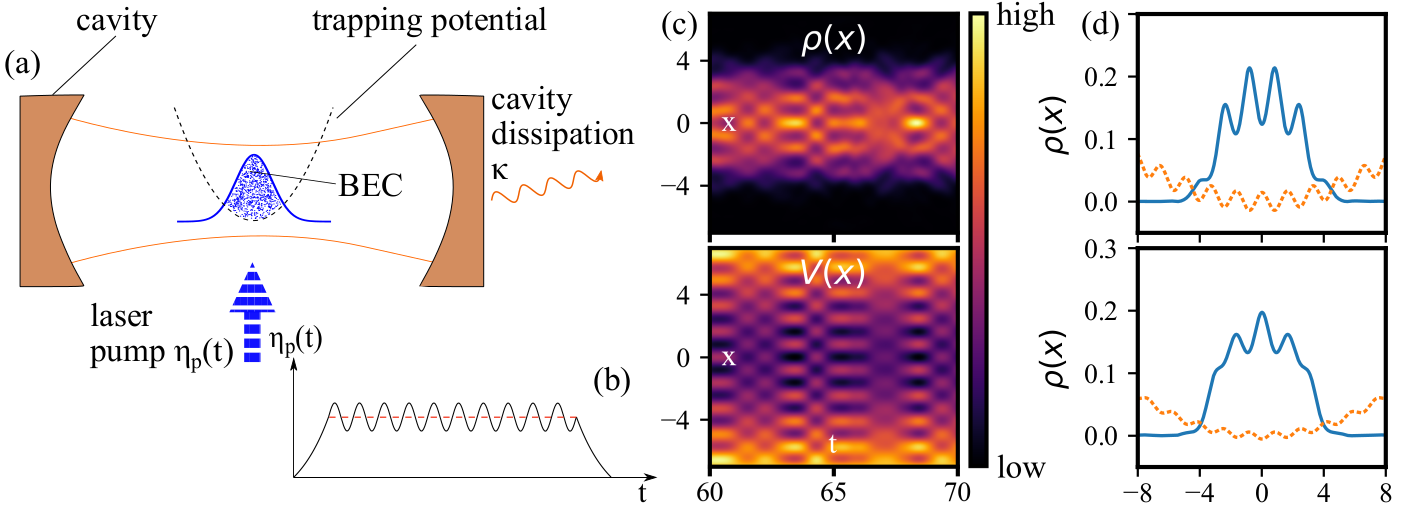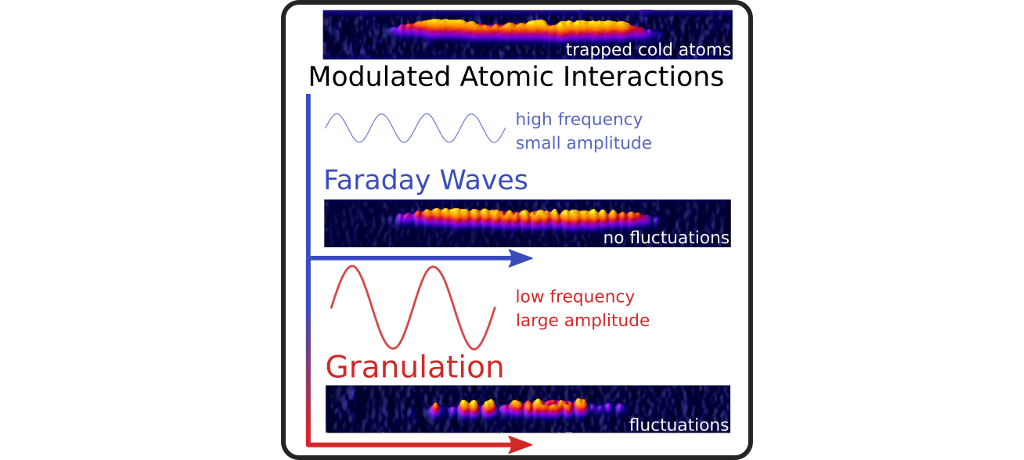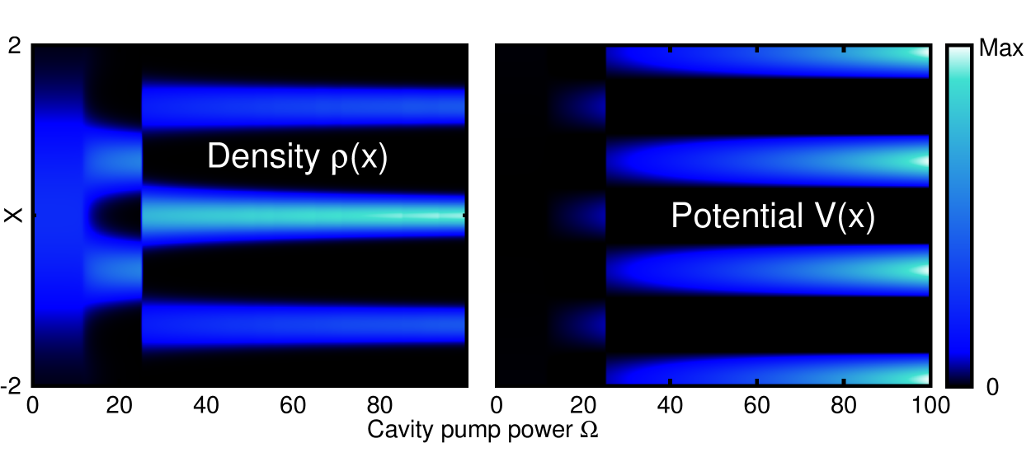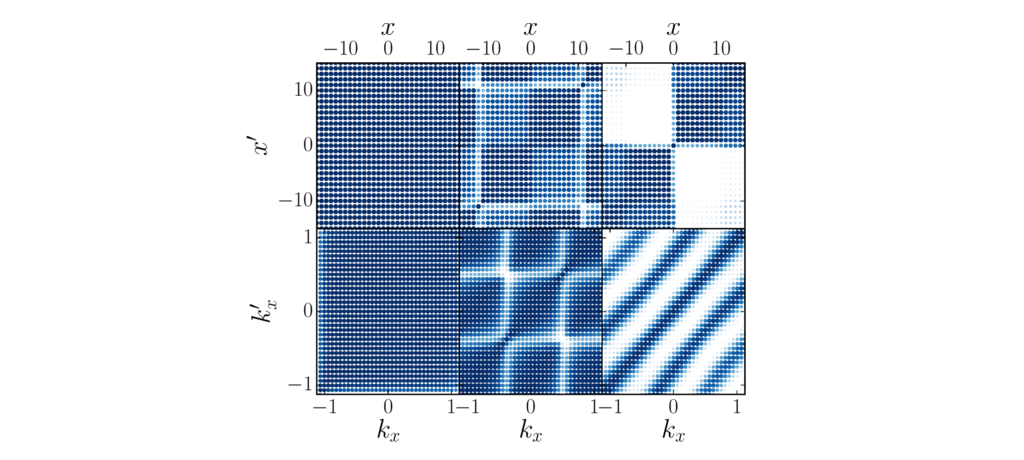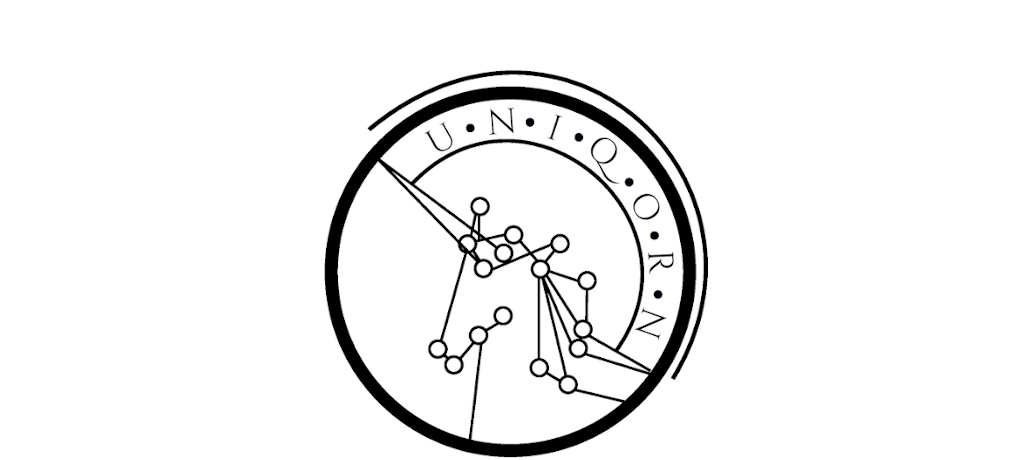PRA: Superlattice switching in a driven-dissipative Bose-Einstein condensate in a cavity
The exotic physics of Bose-Einstein-condensates (BECs) can be further explored with lasers. When a laser photon collides with the BEC, the atoms can absorb its energy and re-emit it a later time along an orthogonal direction.
If the BEC is placed in between highly reflective mirrors, the re-emitted light can be contained and amplified in the process. Above a certain threshold of the laser power, the BEC starts to coherently scatter a macroscopic number of photons in the cavity: the system undergoes a phase transition to a so-called superradiant state. The scattered photons in turn create an optical lattice -- a sort of eggshell-shaped landscape where the BEC droplets arrange themselves to form a crystal structure in two possible configurations.
In this paper, we have explored a resonance between BEC and photons by modulating the laser power. The atoms experience a parametric drive by the photons, analogously to what happens for a child on a swing who increases and sustains their motion by stretching and bending the legs at the right frequency.
Similarly, in the driven BEC setup, the parametric resonance induces a dynamical pulsation of the droplet crystal between the two configurations [see image].
Heating characteristics confirm that the dynamical phase is a new state of matter: the normal and the superradiant BEC do not heat up when driven, while the dynamical phase does. Read more at arXiv:1710.02474 and PRA, 98, 053620 (2018).
